Severe weather can strike at any time, and for commercial buildings, the roof often bears the brunt of high winds, heavy rain, hail, and other storm elements. A damaged roof can lead to significant financial losses, from repair costs to operational disruptions. Therefore, storm preparedness is crucial for commercial property owners and managers who wish to safeguard their investments. This article outlines key strategies to ensure your commercial roof is ready to withstand severe weather.
Regular Inspections and Maintenance
The first step in storm preparedness is conducting regular roof inspections and maintenance. It’s advisable to have a professional roofing contractor inspect your roof at least twice a year and after any major storm event. These inspections can identify potential vulnerabilities, such as cracks, blisters, and loose materials, which can be exacerbated by severe weather. Regular maintenance also includes cleaning gutters and downspouts to ensure proper drainage and prevent water accumulation on the roof.
Implement Preventive Measures
Preventive measures are vital in strengthening the roof’s structure and ensuring it can withstand the pressures of a storm. Here are some preventive actions to consider:
- Securing Loose Items: Ensure that all equipment, such as HVAC units and satellite dishes, are securely fastened to the roof. Loose items can become projectiles during high winds, causing significant damage.
- Reinforcing Flashing: Flashing is often a weak point on roofs, particularly around edges, walls, and openings. Ensure that all flashing is secure and intact to prevent water from entering under the roof membrane.
- Checking Drainage Systems: Proper drainage is crucial during heavy rainfall. Make sure that internal drains and scuppers are clear of debris to facilitate water flow and prevent ponding, which can lead to roof collapses.
Upgrade Roofing Materials
If your commercial roof is nearing the end of its service life or has required frequent repairs, consider upgrading to more durable materials. Metal roofing, for example, offers exceptional durability and can withstand high winds. For buildings in hail-prone areas, impact-resistant materials can prevent punctures and cracks. Investing in high-quality, durable roofing materials can reduce the need for emergency repairs after storms.
Develop an Emergency Plan
Having an emergency response plan in place before a storm hits is crucial. This plan should include:
- Emergency Contact List: Maintain a list of contacts for all key personnel and services, such as roofing contractors, insurance agents, and emergency repair services.
- Site-Specific Guidelines: Tailor your emergency plan to the specifics of your building and roof. Include plans for securing or removing loose material, shutting down equipment, and other necessary precautions.
- Post-Storm Assessment: Outline the steps for a thorough post-storm inspection and the process for documenting damages for insurance claims.
Review Insurance Coverage
Ensure that your commercial property insurance covers storm damage. Review your policy with an insurance expert and understand the specifics of what is covered, including any deductibles or exclusions. Consider additional coverage for business interruption to mitigate the financial impact if the building becomes unusable after a storm.
Preparing your commercial roof for stormy weather is essential to protect your property and minimize economic losses. Regular inspections, preventive maintenance, material upgrades, a well-devised emergency plan, and comprehensive insurance are all critical components of a robust storm preparedness strategy. By taking proactive steps, you can ensure that your roof is equipped to handle whatever nature throws its way, preserving the safety of the building and its occupants.

